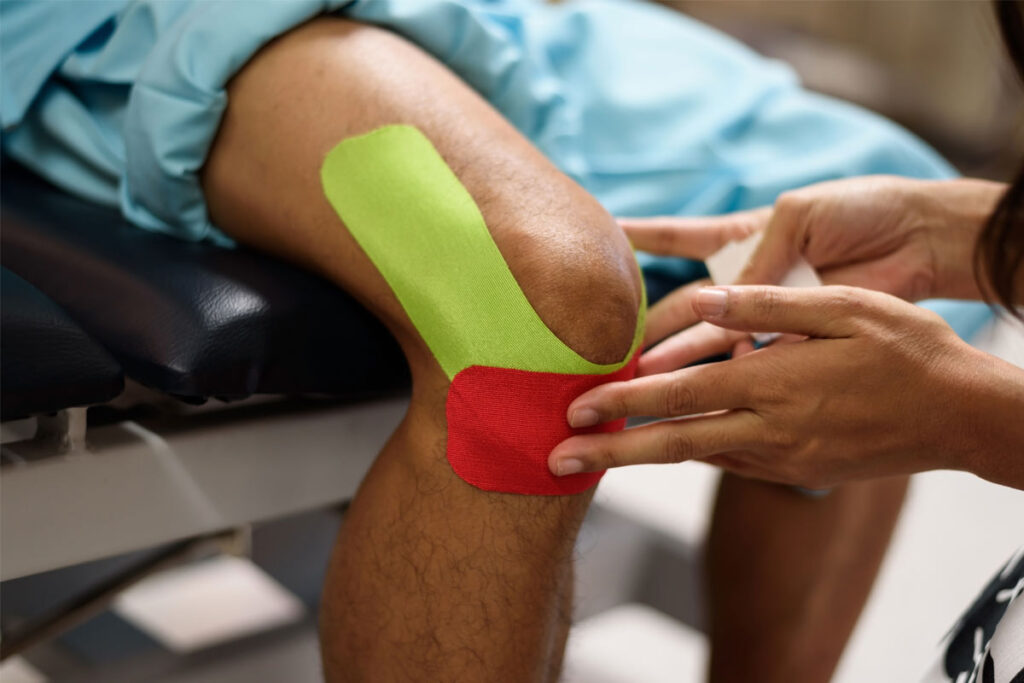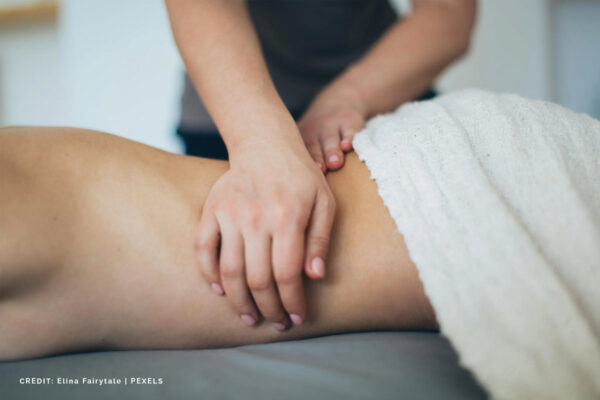Runner’s Knee and Beyond: Understanding Common Running Injuries
Running remains a widely accessible and popular form of physical activity across Canada, enjoyed for its cardiovascular benefits, stress reduction, and minimal equipment requirements. Participation in running events, from local 5Ks to major marathons, highlights its enduring appeal. However, the repetitive impact and demands placed on the body mean that running is often associated with a risk of injury. Statistics Canada data, while not isolating running specifically, indicates that sport and exercise are frequent causes of activity-limiting injuries, particularly among younger Canadians.
Recognizing the symptoms associated with different conditions is the first step towards effective management. Understanding the potential underlying causes can inform prevention strategies. The goal is to equip runners with foundational knowledge about injury identification, contributing factors, prevention techniques, and basic management approaches.
What Exactly is “Runner’s Knee”?
“Runner’s knee” is a common term, but it typically refers to Patellofemoral Pain Syndrome (PFPS). The condition manifests as patellar pain, or pain behind or around the kneecap. The area where the patella articulates with the thigh bone (femur) is frequently where the discomfort occurs. Running, squatting, climbing stairs, and prolonged sitting might exacerbate the pain.
PFPS is generally considered an overuse injury, often stemming from biomechanical issues, muscle imbalances, or training errors that increase stress on the patellofemoral joint. It is one of the most frequently reported ailments among runners, prompting significant research into its causes and management.
Recognizing the Signs and Symptoms
Early recognition of injury symptoms is crucial for preventing minor issues from escalating into chronic problems. Paying attention to the body’s signals is fundamental.
- Pain Location: The primary symptom is typically a dull, aching pain felt directly behind the kneecap (patella) or around its edges. It often feels deep within the knee joint, rather than being sharp or superficial, and can be difficult to pinpoint precisely at times.
- Aggravation with Knee Bending: Activities involving significant knee flexion under load frequently provoke the pain. This includes actions such as climbing or descending stairs, squatting deeply, lunging, or kneeling. The discomfort tends to increase proportionally with the depth of the knee bend and the load applied.
- Running-Related Pain: During running, pain often manifests or worsens, particularly when running downhill or on uneven surfaces. It might start subtly after a certain distance and gradually intensify, sometimes forcing the runner to stop. Uphill running might sometimes feel less provocative than level or downhill sections.
- “Moviegoer’s Sign”: Pain can develop after prolonged periods of sitting with the knees bent, such as during a movie, long car ride, or while working at a desk. This discomfort arises from sustained pressure between the kneecap and the thigh bone in a flexed position.
- Audible or Palpable Sensations: Some individuals report occasional clicking, popping, or a grinding sensation (crepitus) within the knee during movement, particularly when bending or straightening the leg. While not always present or indicative of damage severity, it can accompany the pain of PFPS.
- Tenderness Around Kneecap: Pressing gently around the edges of the kneecap, or sometimes attempting to move the kneecap side-to-side, might elicit tenderness or reproduce the familiar ache. This localized tenderness helps differentiate PFPS pain from pain originating elsewhere in the knee structure.
- Minimal Swelling: Unlike injuries such as ligament tears or acute arthritis flare-ups, significant visible swelling or joint effusion is generally not a prominent feature of typical PFPS. Mild puffiness might occasionally occur after intense activity, but pronounced swelling suggests other potential diagnoses should be considered.
Potential Causes

Running injuries seldom arise from a single factor; they usually result from a combination of intrinsic (body-specific) and extrinsic (training/environment-related) elements.
- Training Errors: Abrupt increases in mileage, intensity, or frequency are primary culprits. Doing “too much, too soon” overwhelms the body’s adaptive capacity. Inadequate warm-ups, insufficient cool-downs, and neglecting rest days also contribute significantly by not allowing tissues adequate recovery time between sessions.
- Biomechanical Issues: Individual variations in anatomy and movement patterns play a role. Factors like flat feet (overpronation), high arches (supination), leg length discrepancies, excessive hip drop (pelvic instability), or poor running form can distribute forces unevenly, stressing specific tissues and predisposing certain areas to injury over time.
- Muscle Imbalances and Weakness: Weakness or imbalances in key muscle groups, particularly the gluteal muscles, core muscles, quadriceps, and hamstrings, can disrupt proper running mechanics. For instance, weak hip abductors can lead to increased stress on the knees and IT band. Insufficient core stability affects overall control.
- Inappropriate Footwear: Running in shoes that are worn out, provide inadequate support for one’s foot type, or are not suited for the running surface can increase injury risk. Worn cushioning loses shock absorption, and improper fit can alter foot mechanics, contributing to issues from the feet up the kinetic chain.
- Running Surface: Consistently running on hard surfaces like concrete increases impact forces compared to softer surfaces like trails or tracks. Abruptly switching between surfaces without adaptation can also pose a risk. Cambered roads (sloped surfaces) can create asymmetrical loading, potentially leading to problems.
- Insufficient Flexibility or Mobility: Tightness in muscles such as the hamstrings, hip flexors, or calf muscles can restrict normal range of motion and alter running biomechanics. Limited joint mobility, for example in the hips or ankles, forces compensatory movements elsewhere, potentially overloading other structures.
- Previous Injury: Having a history of a running injury increases the likelihood of recurrence or developing compensatory injuries if the initial problem was not fully rehabilitated. Incomplete recovery can leave residual weakness, stiffness, or altered movement patterns that predispose the runner to further issues.
Prevention Strategies for a Healthier Run
Implementing proactive strategies can significantly reduce the likelihood of developing common running injuries. Consistency is key to effective prevention.
- Gradual Progression: Follow the “10 percent rule” as a general guideline – avoid increasing weekly mileage, run duration, or intensity by more than 10 percent per week. This allows muscles, tendons, and bones adequate time to adapt to increased loads, reducing the risk of overuse injuries.
- Proper Warm-Up and Cool-Down: Begin each run with 5-10 minutes of light aerobic activity (walking, jogging) followed by dynamic stretches (leg swings, torso twists). Post-run, perform static stretches, holding each for 20-30 seconds, focusing on major muscle groups like calves, hamstrings, quadriceps, and hip flexors.
- Strength Training: Incorporate regular strength training sessions (2-3 times per week) targeting core muscles, hips (glutes), quadriceps, and hamstrings. Exercises like squats, lunges, planks, bridges, and calf raises help improve muscle strength and stability, supporting better running form and reducing load on joints.
- Appropriate Footwear and Replacement: Choose running shoes that match your foot type (neutral, pronator, supinator) and running style. Seek fitting assistance if unsure. Replace running shoes every 500-800 kilometres, or sooner if visible wear appears on the outsole or midsole cushioning feels compressed, as worn shoes lose shock absorption.
- Listen to Your Body: Pay attention to aches and pains. Do not push through significant or persistent discomfort. Differentiate between normal muscle soreness and potential injury pain. Incorporate rest days into your schedule and consider cross-training (swimming, cycling) to maintain fitness while reducing repetitive running stress.
- Running Form Consideration: While there isn’t one “perfect” form, being mindful of basic principles can help. Aim for a relatively upright posture, avoid overstriding (landing with the foot far ahead of the body’s centre of mass), and try to maintain a cadence (steps per minute) around 170-180, which often promotes efficiency.
Basic Management Strategies
When running pain occurs, initial self-management can often be beneficial, but knowing when professional evaluation is needed is important.
- Rest and Activity Modification: The first step for most acute running injuries is relative rest. This doesn’t necessarily mean complete inactivity but rather avoiding activities that aggravate the pain. Reduce running mileage or intensity or temporarily switch to low-impact cross-training like swimming or cycling.
- Ice Application: Especially in the first 48 to 72 hours following an injury or flare-up, applying cold packs to the affected area for 15 to 20 minutes many times a day might help reduce pain and inflammation. To avoid ice burn, make sure a small piece of cloth is positioned between the skin and the ice pack.
- Compression and Elevation: Using an elastic compression bandage can help reduce swelling in some injuries (e.g., ankle sprains). Elevating the injured limb above heart level whenever possible can also assist in reducing swelling by promoting fluid drainage.
- Pain Relief: Over-the-counter pain relievers like ibuprofen (an anti-inflammatory) or paracetamol may help manage pain and inflammation according to package directions. However, these should not be used to mask pain to continue running, as this can worsen the underlying injury.
- Gentle Stretching and Mobility: Range-of-motion exercises and mild stretching can assist preserve flexibility and avoid stiffness after acute pain has subsided. Don’t stretch yourself into excruciating discomfort. In accordance with rehabilitative principles, concentrate on the muscles surrounding the affected area.
When to Seek Help

- Severe Pain or Inability to Bear Weight: If the pain is intense immediately following an incident or rapidly worsens to the point where you cannot put weight on the affected leg or walk normally, seek prompt medical attention. This could indicate a significant injury like a fracture or severe sprain.
- Pain Persisting Despite Self-Care: If your pain does not noticeably improve after one to two weeks of consistent relative rest, ice application, and activity modification, professional evaluation is recommended. Lingering pain suggests the injury may require specific diagnosis and targeted treatment beyond basic home care.
- Signs Suggesting Structural Damage: Noticeable swelling, significant bruising developing soon after the injury, joint instability (a feeling of the knee or ankle ‘giving way’), joint locking or catching, or any visible deformity requires assessment by a healthcare professional to rule out ligament tears, cartilage damage, or other structural issues.
- Suspected Bone Stress Injury: If you experience deep, concentrated pain directly over a bone (commonly shin, foot, or hip) that progressively worsens with impact activities like running and feels better with rest, consult a professional. This pattern is characteristic of a stress fracture, which needs proper diagnosis and management.
- Recurring or Chronic Problems: If you experience recurrent episodes of the same injury despite preventive efforts, or if chronic pain consistently interferes with your running goals and daily activities, seeking help is advisable. A professional can help identify underlying biomechanical issues or training errors contributing to the cycle.
Running offers numerous health benefits, but the nature of the activity carries an inherent risk of injury. Awareness of common causes—including training errors, biomechanical factors, and inadequate strength or flexibility—empowers individuals to implement preventative measures such as gradual progression, appropriate warm-ups, strength training, and suitable footwear.
For assessment and tailored rehabilitation plans for running injuries in the Greater Toronto Area, consider contacting PARC Ontario. Reach out to discuss your needs at one of our convenient locations: (416) 445-2075 or (416) 430-0314 [Scarborough], (905) 897-2092 [Mississauga], (905) 686-9081 [Ajax], (905) 430-2112 [Whitby], and (905) 579-9938 [Oshawa].





